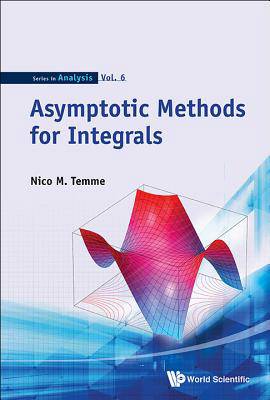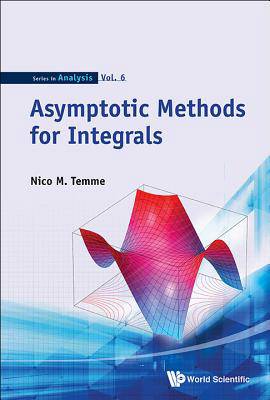
Door een staking bij bpost kan je online bestelling op dit moment iets langer onderweg zijn dan voorzien. Dringend iets nodig? Onze winkels ontvangen jou met open armen!
- Afhalen na 1 uur in een winkel met voorraad
- Gratis thuislevering in België vanaf € 30
- Ruim aanbod met 7 miljoen producten
Door een staking bij bpost kan je online bestelling op dit moment iets langer onderweg zijn dan voorzien. Dringend iets nodig? Onze winkels ontvangen jou met open armen!
- Afhalen na 1 uur in een winkel met voorraad
- Gratis thuislevering in België vanaf € 30
- Ruim aanbod met 7 miljoen producten
Zoeken
€ 348,45
+ 696 punten
Omschrijving
This book gives introductory chapters on the classical basic and standard methods for asymptotic analysis, such as Watson's lemma, Laplace's method, the saddle point and steepest descent methods, stationary phase and Darboux's method. The methods, explained in great detail, will obtain asymptotic approximations of the well-known special functions of mathematical physics and probability theory. After these introductory chapters, the methods of uniform asymptotic analysis are described in which several parameters have influence on typical phenomena: turning points and transition points, coinciding saddle and singularities. In all these examples, the special functions are indicated that describe the peculiar behavior of the integrals.The text extensively covers the classical methods with an emphasis on how to obtain expansions, and how to use the results for numerical methods, in particular for approximating special functions. In this way, we work with a computational mind: how can we use certain expansions in numerical analysis and in computer programs, how can we compute coefficients, and so on.
Specificaties
Betrokkenen
- Auteur(s):
- Uitgeverij:
Inhoud
- Aantal bladzijden:
- 628
- Taal:
- Engels
- Reeks:
- Reeksnummer:
- nr. 6
Eigenschappen
- Productcode (EAN):
- 9789814612159
- Verschijningsdatum:
- 30/12/2014
- Uitvoering:
- Hardcover
- Formaat:
- Genaaid
- Afmetingen:
- 168 mm x 257 mm
- Gewicht:
- 1197 g

Alleen bij Standaard Boekhandel
+ 696 punten op je klantenkaart van Standaard Boekhandel
Beoordelingen
We publiceren alleen reviews die voldoen aan de voorwaarden voor reviews. Bekijk onze voorwaarden voor reviews.











